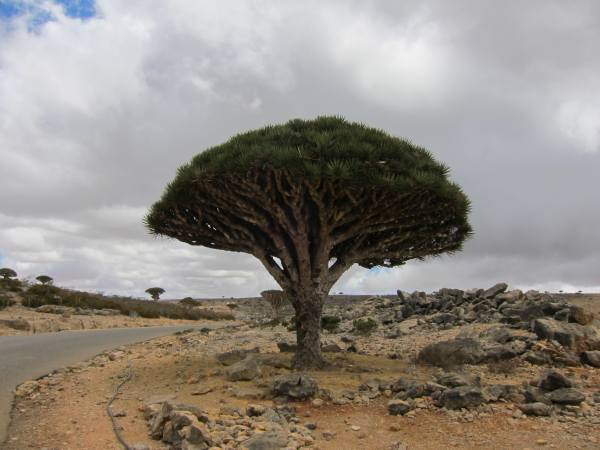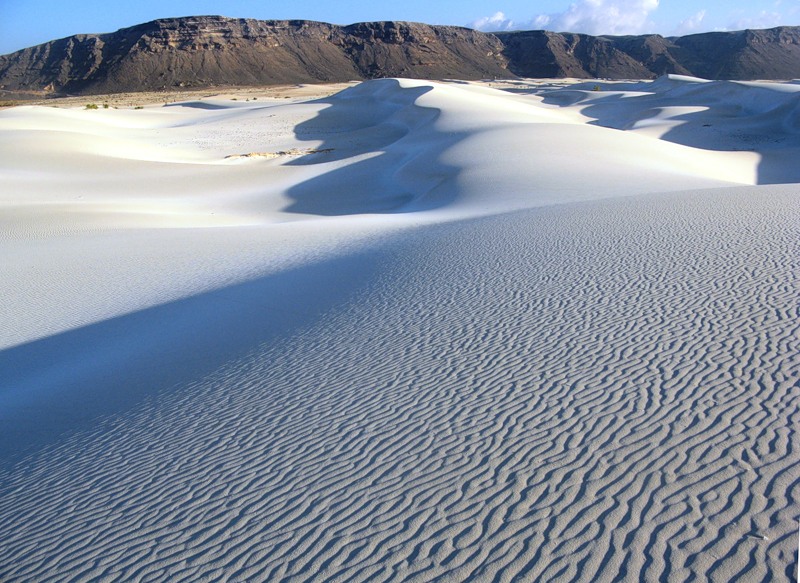RA9USU will be active from Socotra Island (IOTA AF-028), Yemen 27 November- 1 December 2014 as 7O2A.
He will operate on HF bands including activity in CQ WW DX CW Contest 29- 30 November 2014.
QSL via UA3DX.
Socotra an island of biological diversity and socio- cultural heritage
The Socotra Island is a part of the Socotra Archipelago which lies to the south of Ras Fartak on the Arabian Sea Coast of Yemen. Four islands comprise the Archipelago, namely, Socotra, Darsa, Samha and Abd al Kuri; of these four islands Socotra is the largest. The Islands eastern and central parts are dominated by high mountain ranges with peaks and valleys often 1570 meters high above sea level and offer lush green oases that are sometimes covered and not easily seen.
The Islands History
Much of what Socotra is today is linked to its past. Very long ago the Socotra Island was a part of Africa and Arabia before drifting away and is now separated from these two land masses by the Gulf of Aden. The island measures 89 miles in length and 30.9 miles in width. It is estimated that its isolation from the rest of the world lasted for almost 20 million years. Its long isolation from the rest of civilization enabled it to become home to a number of indigenous species. One will find all the land mollusks here, almost 90% of the reptiles and one third of the plant varieties in this island and never seen in any other part of the world, besides, it is home to the biggest endemic bird species in the Middle East. In July 2008 UNESCO declared the island as a world natural heritage site due to its evolutionary uniqueness, biological diversity and socio-cultural heritage.
When studying the early history of the island one is drawn to the fact that it was used as a staging point in the trade route between the 1st century BC and the 6th Century AD. The Portuguese in 1507 tried to set up a garrison fort in the island at Suq as a strategic route to India, but abandoned their plans four years later as it did not have a proper harbor, also, the infertile land led to famine and sickness within the garrison. In 1511 the Mahra Sultans took control of the island. In 1834 the English established a garrison on the same principles as the Portuguese before them, however as the climatic conditions were unsuitable they abandoned the island five years later in 1839. In 1967 the Mahra Sultanate was abolished and Socotra became a part of South Yemen, after the unification of both the Yemens it became a part of the Republic of Yemen.

Geography of the island
Socotra is considered as one of the most isolated landforms of continental origin on Earth. Socotra the main island amongst the four islands that form the Socotra Archipelago is made up of three types of terrains, consisting of narrow coastal plains, limestone plateau and the Haghier Mountains which rise to 4931 ft above sea level.
The Climate
The climatic conditions in Socotra witnesses a tropical desert climate and a semi- desert climate with average temperatures hovering around 25 ̊ C. The rainfall in the island is fairly thin and spread throughout the year ranging between 12mm to 23mm, with the higher inland areas experiencing more rain than in the coastal low lands. During the monsoon season the island experiences strong wind and high seas that makes it inaccessible to the outside world. The general humidity level in the island on an average is 25.2%

The rich bio diversity
The island is known as the ‘jewel of biodiversity’ in the Arabian Sea. Due to it long isolation from the rest of civilization and due to its harsh climatic conditions of heat and drought, it has resulted in the creation of unique flora that is endemic to the area. A team of Biologists from the UN who had explored the island for its flora and fauna found to their surprise 700 native species which are not found in any other part of the world. The field surveys by the ‘centre for middle eastern plants’ have found that 307 plant species from out of the 825 plant species found in the island were native to the island. A one of its kind and an unique tree found on the island is the ‘dragon’s blood tree’ which is an umbrella shaped tree that derived its name due to the red sap found in the tree, which was used as a dye earlier and now used as varnish or as paint. Amongst the bird species that inhabit the island, some notable indigenous bird varieties that inhabit the island are Socotra starling , Socotra sunbird, Socotra cisticola, Socotra sparrow, and Socotra golden-winged grosbeak. It is estimated that 90% of the reptiles found on the island are native to the island such as the legless lizard, skinks and one species of chameleon. Many of the corals reefs found in the island were found to be very native to the place.

Demography
It is estimated that 50,000 people live on the island of Socotra. Most of the population in the island are of Southern Arabian descent and are indigenous to Socotra coming from the Al-Mahrah tribe. The other people who populate the island are of Somali and Indian origin and a good number of African people who are believed to be the descendants of runaway slaves . The main city of the island Hadibu with a population of 8545, Qlansiyah the second largest town with a population of 3862 and Qadub with 929 people are all found on the north coast of the island. The people speak Soqotri.
Economy
By tradition the people of Socotra are involved in fishing, animal husbandry and cultivation of dates. In terms of exports from the island, the major items exported are ghee, dates, tobacco and fish. With the opening up of Airport at Socotra in 1999 it paved the way for breaking the inaccessibility that the island faced especially during June to September of the year when the monsoon is very active. For electricity the people use diesel generators. There are only two main roads that connect the island – one paved road runs from Qulansiyah to Hadibu and to DiHamri, the other road connects the northern coast to the southern end through the Dixsam Plateau.
For transportation within the island there are a few minibuses that operate, and for a more personalized service one can make use of car rental service that invariably comes with a driver. However, since the ecosystem of the island gets impacted due to road construction activities, people have turned to more eco- friendly mode of travel such as the bicycle and the enduro motorcycle tours.
Video Socotra

